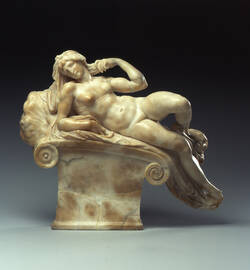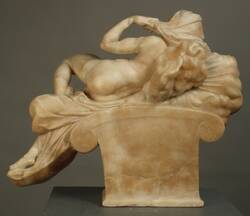From 1521 Michelangelo created an extension to the church of San Lorenzo in Florence, which became famous as the "New Sacristy" or "Medici Chapel". Although the decoration remained unfinished, the sculptures (1524-34) for the two tombs of Lorenzo and Giuliano de' Medici are among the greatest masterpieces of the Italian Renaissance. Above all, the four monumental reclining figures depicting the "times of day" (an allegory on the passage of time) exerted a great influence on generations of artists.
Further Media



These statuettes have been in the Dresden collection since the late sixteenth century. Most likely, they were a gift sent from Florence – with a power political agenda in mind.
Michelangelo’s Times of Day were monumental sculptures decorating the funerary chapel of the Medici – the city’s most powerful ruling dynasty. But the Medici family depended on the favour of the German Holy Roman Emperor to secure a permanent basis for their claim to power. The Medici realms in Florence and Tuscany were largely an imperial fiefdom under the Holy Roman Emperor – and so to gain the Emperor's favour, the Medici were at pains to establish good relations with the Dresden court. After all, from his youth August, Elector of Saxony, had been friends with the Habsburg Holy Roman Emperor Maximilian II – and so the Medici saw August as a suitable candidate to put in a good word for them when the time came. And the time obviously did come – since partly due to August’s support, Maximillian granted the Medici rulers the title Grand Duke of Tuscany. In this context, cultural exchange flourished between Florence and Dresden – or ‘Florence on the River Elbe’, as the city also became known. Giambologna’s exquisite alabaster statuettes were sent to Dresden as a valuable present – no doubt in the spirit of the saying ‘gifts cement friendships’.
- Location & Dating
- before 1574
- Material & Technique
- Alabaster
- Dimenions
- H. 41,5 cm, B. 49,0 cm, T. 18,8 cm
- Museum
- Skulpturensammlung
- Inventory number
- H4 004 / 029